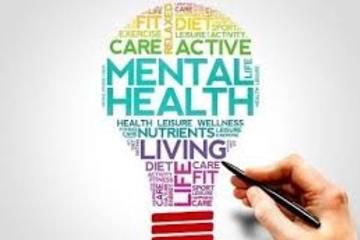We found 38 results that contain "physical fit"
Posted on: #iteachmsu


Physical Health
Physical wellness promotes proper care of our bodies for optimal health and functioning. There are many elements of physical wellness that all must be cared for together. Overall physical wellness encourages the balance of physical activity, nutrition and mental well-being to keep your body in top condition
NAVIGATING CONTEXT
Posted on: #iteachmsu

How Can We Successfully Land a Rover on Mars?
The classic egg drop experiment gets reinvented as a driving question for physics students to explore a real-world problem.
By Suzie Boss
July 26, 2018
When a teenager climbs atop his desk and drops an object to the floor, teacher Johnny Devine doesn’t object. Far from it—he’s as eager as the rest of the class to see what happens next.
In a split second, the student and his teammates get positive feedback for the object they have cobbled together by hand. A small parachute made of plastic and held in place with duct tape opens as planned, slowing the descent and easing the cargo to a safe landing. Students exchange quick smiles of satisfaction as they record data. Their mission isn’t accomplished yet, but today’s test run brings them one step closer to success as aspiring aerospace engineers.
To boost engagement in challenging science content, Devine has his students tackle the same problems that professional scientists and engineers wrestle with. “Right away, they know that what they are learning can be applied to an actual career,” Devine says. “Students are motivated because it’s a real task.”
From the start of Mission to Mars, students know that expert engineers from local aerospace companies will evaluate their final working models of Mars landing devices. Their models will have to reflect the students’ best thinking about how to get a payload from orbit onto the surface of the Red Planet without damaging the goods inside. While real Mars landings involve multimillion-dollar equipment, students’ launchers will carry four fragile eggs.
THE ROAD MAP
Although the project gives students considerable freedom, it unfolds through a series of carefully designed stages, each focused on specific learning goals. Having a detailed project plan “creates a roadmap,” Devine explains, “for the students to really track their progress and see how what they’re learning connects back to the guiding question: How can we successfully land a rover on Mars?”
©George Lucas Educational Foundation
Before introducing technical content, Devine wants students to visualize what space scientists actually do. By watching videos of engineers who design entry, descent, and landing systems for spacecraft, students start getting into character for the work ahead.
Devine introduces a series of hands-on activities as the project unfolds to help students put physics concepts into action. They learn about air resistance, for instance, by experimenting with parachute designs and wrestling with a real challenge: How will they slow their landers to a reasonable speed for entry into the thin Martian atmosphere?
To apply the concept of change in momentum, students design airbag systems to go on the bottom of their landers—a location aptly called the crumple zone. They experiment with bubble wrap and other materials as potential cushioners for their cargo.
As the grand finale approaches, students keep using what they learn to test, analyze, and modify their designs. “You have to repeat the equations with different trials,” one student explains. “Being able to use that math over and over again helps it stick.”
Much of the hands-on learning in this PBL classroom “might look like a traditional physics lab,” Devine acknowledges, with students learning concepts through inquiry investigations. What’s different is the teacher’s ongoing reminder “to make sure students stay in character” as systems engineers. Each lab investigation relates back to their driving question and creates more opportunities for Devine to ask probing questions and formatively assess his students’ understanding. “We do a lot of framing in and framing out after each of those lessons so students have the chance to reflect and connect it back,” the teacher explains.
EXPERT CONVERSATIONS
When it is finally time for students to launch their precious cargo off a second-story landing, engineers from local aerospace companies are standing by to assess results. How many eggs in each lander will survive the fall?
Even more important than the test data are the discussions between experts and students. One engineer, for instance, asks to see earlier versions of a team’s design and hear about the tests that led to modifications. A student named Elizabeth perks up when she hears engineers using the same technical vocabulary that she and her classmates have learned. “It was kind of a connection—this is actually a thing that goes on,” she says.
“They had really deep, meaningful conversations so that students could practice communicating their justification for their designs,” Devine says. Hearing them use academic language and apply physics concepts tells the teacher that students deeply understand the science behind their designs. “At the end of the day, that’s what I’m most concerned about,” he says.
https://youtu.be/bKc2shFqLao
By Suzie Boss
July 26, 2018
When a teenager climbs atop his desk and drops an object to the floor, teacher Johnny Devine doesn’t object. Far from it—he’s as eager as the rest of the class to see what happens next.
In a split second, the student and his teammates get positive feedback for the object they have cobbled together by hand. A small parachute made of plastic and held in place with duct tape opens as planned, slowing the descent and easing the cargo to a safe landing. Students exchange quick smiles of satisfaction as they record data. Their mission isn’t accomplished yet, but today’s test run brings them one step closer to success as aspiring aerospace engineers.
To boost engagement in challenging science content, Devine has his students tackle the same problems that professional scientists and engineers wrestle with. “Right away, they know that what they are learning can be applied to an actual career,” Devine says. “Students are motivated because it’s a real task.”
From the start of Mission to Mars, students know that expert engineers from local aerospace companies will evaluate their final working models of Mars landing devices. Their models will have to reflect the students’ best thinking about how to get a payload from orbit onto the surface of the Red Planet without damaging the goods inside. While real Mars landings involve multimillion-dollar equipment, students’ launchers will carry four fragile eggs.
THE ROAD MAP
Although the project gives students considerable freedom, it unfolds through a series of carefully designed stages, each focused on specific learning goals. Having a detailed project plan “creates a roadmap,” Devine explains, “for the students to really track their progress and see how what they’re learning connects back to the guiding question: How can we successfully land a rover on Mars?”
©George Lucas Educational Foundation
Before introducing technical content, Devine wants students to visualize what space scientists actually do. By watching videos of engineers who design entry, descent, and landing systems for spacecraft, students start getting into character for the work ahead.
Devine introduces a series of hands-on activities as the project unfolds to help students put physics concepts into action. They learn about air resistance, for instance, by experimenting with parachute designs and wrestling with a real challenge: How will they slow their landers to a reasonable speed for entry into the thin Martian atmosphere?
To apply the concept of change in momentum, students design airbag systems to go on the bottom of their landers—a location aptly called the crumple zone. They experiment with bubble wrap and other materials as potential cushioners for their cargo.
As the grand finale approaches, students keep using what they learn to test, analyze, and modify their designs. “You have to repeat the equations with different trials,” one student explains. “Being able to use that math over and over again helps it stick.”
Much of the hands-on learning in this PBL classroom “might look like a traditional physics lab,” Devine acknowledges, with students learning concepts through inquiry investigations. What’s different is the teacher’s ongoing reminder “to make sure students stay in character” as systems engineers. Each lab investigation relates back to their driving question and creates more opportunities for Devine to ask probing questions and formatively assess his students’ understanding. “We do a lot of framing in and framing out after each of those lessons so students have the chance to reflect and connect it back,” the teacher explains.
EXPERT CONVERSATIONS
When it is finally time for students to launch their precious cargo off a second-story landing, engineers from local aerospace companies are standing by to assess results. How many eggs in each lander will survive the fall?
Even more important than the test data are the discussions between experts and students. One engineer, for instance, asks to see earlier versions of a team’s design and hear about the tests that led to modifications. A student named Elizabeth perks up when she hears engineers using the same technical vocabulary that she and her classmates have learned. “It was kind of a connection—this is actually a thing that goes on,” she says.
“They had really deep, meaningful conversations so that students could practice communicating their justification for their designs,” Devine says. Hearing them use academic language and apply physics concepts tells the teacher that students deeply understand the science behind their designs. “At the end of the day, that’s what I’m most concerned about,” he says.
https://youtu.be/bKc2shFqLao
Posted by: Chathuri Super admin..
Assessing Learning
Posted on: #iteachmsu


Tips to increase your hemoglobin levels
Here are some tips to keep in mind to increase your hemoglobin levels:
Switch to brown rice: As a superfood, brown rice can help prevent various diseases related to cholesterol and the gastrointestinal system. It is rich in iron, containing 0.52 milligrams of iron for every 100 grams.
Enjoy dark chocolate: With over 80% of cocoa, dark chocolate naturally improves hemoglobin levels. Plus, it is loaded with minerals, nutrients and antioxidants.
Drink nettle tea: The spice nettle has also proven to be a good source of iron and vitamin B and C. They can also play a part in increasing hemoglobin levels.
Exercise: Take up moderate to high-intensity exercise to help your body produce more hemoglobin to meet the oxygen demands of your body.
Stay tuned to the Activ Living Community. Keep up to date with the latest health tips and trends through expert videos, podcasts, articles, and much more in nutrition, fitness, mindfulness, and lifestyle conditions like Asthma, Blood Pressure, Cholesterol, and Diabetes.
Switch to brown rice: As a superfood, brown rice can help prevent various diseases related to cholesterol and the gastrointestinal system. It is rich in iron, containing 0.52 milligrams of iron for every 100 grams.
Enjoy dark chocolate: With over 80% of cocoa, dark chocolate naturally improves hemoglobin levels. Plus, it is loaded with minerals, nutrients and antioxidants.
Drink nettle tea: The spice nettle has also proven to be a good source of iron and vitamin B and C. They can also play a part in increasing hemoglobin levels.
Exercise: Take up moderate to high-intensity exercise to help your body produce more hemoglobin to meet the oxygen demands of your body.
Stay tuned to the Activ Living Community. Keep up to date with the latest health tips and trends through expert videos, podcasts, articles, and much more in nutrition, fitness, mindfulness, and lifestyle conditions like Asthma, Blood Pressure, Cholesterol, and Diabetes.
Authored by: Vijaya
Assessing Learning
Posted on: #iteachmsu


Management Theories
Management theories help organizations to focus, communicate, and evolve. Using management theory in the workplace allows leadership to focus on their main goals. When a management style or theory is implemented, it automatically streamlines the top priorities for the organization. Management theory also allows us to better communicate with people we work with which in turn allows us to work more efficiently. By understanding management theory, basic assumptions about management styles and goals can be assumed and can save time during daily interactions and meetings within an organization.
Theories can only reach so far, and management theories are no exception. There is no such thing as a one-size-fits-all management theory. What may work for one organization may not be relevant for another. Therefore, when one theory does not fit a particular situation, it is important to explore the option of developing a new theory that would lead in a new, more applicable direction. While some theories can stand the test of time, other theories may grow to be irrelevant and new theories will develop in their place.
We can find many management theories introduced on :
Scientific Management Theory
Administrative Management Theory
Bureaucratic Management Theory
Human Relations Management Theory
X&Y Management Theory
REF: https://courses.lumenlearning.com/wmopen-organizationalbehavior/chapter/management-theory-and-organizational-behavior/
Theories can only reach so far, and management theories are no exception. There is no such thing as a one-size-fits-all management theory. What may work for one organization may not be relevant for another. Therefore, when one theory does not fit a particular situation, it is important to explore the option of developing a new theory that would lead in a new, more applicable direction. While some theories can stand the test of time, other theories may grow to be irrelevant and new theories will develop in their place.
We can find many management theories introduced on :
Scientific Management Theory
Administrative Management Theory
Bureaucratic Management Theory
Human Relations Management Theory
X&Y Management Theory
REF: https://courses.lumenlearning.com/wmopen-organizationalbehavior/chapter/management-theory-and-organizational-behavior/
Authored by: Greg
Navigating Context
Posted on: #iteachmsu


Are there any advances in this direction that you think hold promise?
The basic idea of intelligence:An explosion is that once machines reach a certain level of intelligence, they’ll be able to work on AI just like we do and improve their own capabilities — redesign their own hardware and so on — and their intelligence will zoom off the charts. There’s an area emerging called “cyber-physical systems” about systems that couple computers to the real world. With a cyber-physical system, you’ve got a bunch of bits representing an air traffic control program, and then you’ve got some real airplanes, and what you care about is that no airplanes collide. You’re trying to prove a theorem about the combination of the bits and the physical world. What you would do is write a very conservative mathematical description of the physical world — airplanes can accelerate within such-and-such envelope — and your theorems would still be true in the real world as long as the real world is somewhere inside the envelope of behaviors.
Yet you’ve pointed out that it might not be mathematically possible to formally verify AI systems.
There’s a general problem of “undecidability” in a lot of questions you can ask about computer programs. Alan Turing showed that no computer program can decide whether any other possible program will eventually terminate and output an answer or get stuck in an infinite loop. So if you start out with one program, but it could rewrite itself to be any other program, then you have a problem, because you can’t prove that all possible other programs would satisfy some property.
Yet you’ve pointed out that it might not be mathematically possible to formally verify AI systems.
There’s a general problem of “undecidability” in a lot of questions you can ask about computer programs. Alan Turing showed that no computer program can decide whether any other possible program will eventually terminate and output an answer or get stuck in an infinite loop. So if you start out with one program, but it could rewrite itself to be any other program, then you have a problem, because you can’t prove that all possible other programs would satisfy some property.
Authored by: Rupali
Assessing Learning
Posted on: #iteachmsu


How Does Nature Impact Our Wellbeing?
Nature heals
Being in nature, or even viewing scenes of nature, reduces anger, fear, and stress and increases pleasant feelings. Exposure to nature not only makes you feel better emotionally, but it also contributes to your physical wellbeing, reducing blood pressure, heart rate, muscle tension, and the production of stress hormones.
In addition, nature helps us cope with pain. Because we are genetically programmed to find trees, plants, water, and other nature elements engrossing, we are absorbed by nature scenes and distracted from our pain and discomfort.
muscle tension
physical wellbeing
reducing blood pressure
Nature restores
One of the most intriguing areas of current research is the impact of nature on general wellbeing. In one study in Mind, 95% of those interviewed said their mood improved after spending time outside, changing from depressed, stressed, and anxious to more calm and balanced. Other studies by Ulrich, Kim, and Cervinka show that time in nature or scenes of nature are associated with a positive mood, and psychological wellbeing, meaningfulness, and vitality.
Nature
Flowers
Plants
Being in nature, or even viewing scenes of nature, reduces anger, fear, and stress and increases pleasant feelings. Exposure to nature not only makes you feel better emotionally, but it also contributes to your physical wellbeing, reducing blood pressure, heart rate, muscle tension, and the production of stress hormones.
In addition, nature helps us cope with pain. Because we are genetically programmed to find trees, plants, water, and other nature elements engrossing, we are absorbed by nature scenes and distracted from our pain and discomfort.
muscle tension
physical wellbeing
reducing blood pressure
Nature restores
One of the most intriguing areas of current research is the impact of nature on general wellbeing. In one study in Mind, 95% of those interviewed said their mood improved after spending time outside, changing from depressed, stressed, and anxious to more calm and balanced. Other studies by Ulrich, Kim, and Cervinka show that time in nature or scenes of nature are associated with a positive mood, and psychological wellbeing, meaningfulness, and vitality.
Nature
Flowers
Plants
Authored by: Rupali
Assessing Learning
Posted on: #iteachmsu


Strategic Management - Meaning and Important Concepts
Strategic Management is all about identification and description of the strategies that managers can carry so as to achieve better performance and a competitive advantage for their organization. An organization is said to have competitive advantage if its profitability is higher than the average profitability for all companies in its industry.
Strategic management can also be defined as a bundle of decisions and acts which a manager undertakes and which decides the result of the firm’s performance. The manager must have a thorough knowledge and analysis of the general and competitive organizational environment so as to take right decisions. They should conduct a SWOT Analysis (Strengths, Weaknesses, Opportunities, and Threats), i.e., they should make best possible utilization of strengths, minimize the organizational weaknesses, make use of arising opportunities from the business environment and shouldn’t ignore the threats.
Strategic Management gives a broader perspective to the employees of an organization and they can better understand how their job fits into the entire organizational plan and how it is co-related to other organizational members. It is nothing but the art of managing
employees in a manner which maximizes the ability of achieving business objectives. The employees become more trustworthy, more committed and more satisfied as they can co-relate themselves very well with each organizational task. They can understand the reaction of environmental changes on the organization and the probable response of the organization with the help of strategic management. Thus the employees can judge the impact of such changes on their own job and can effectively face the changes. The managers and employees must do appropriate things in appropriate manner. They need to be both effective as well as efficient.
Strategic management can also be defined as a bundle of decisions and acts which a manager undertakes and which decides the result of the firm’s performance. The manager must have a thorough knowledge and analysis of the general and competitive organizational environment so as to take right decisions. They should conduct a SWOT Analysis (Strengths, Weaknesses, Opportunities, and Threats), i.e., they should make best possible utilization of strengths, minimize the organizational weaknesses, make use of arising opportunities from the business environment and shouldn’t ignore the threats.
Strategic Management gives a broader perspective to the employees of an organization and they can better understand how their job fits into the entire organizational plan and how it is co-related to other organizational members. It is nothing but the art of managing
employees in a manner which maximizes the ability of achieving business objectives. The employees become more trustworthy, more committed and more satisfied as they can co-relate themselves very well with each organizational task. They can understand the reaction of environmental changes on the organization and the probable response of the organization with the help of strategic management. Thus the employees can judge the impact of such changes on their own job and can effectively face the changes. The managers and employees must do appropriate things in appropriate manner. They need to be both effective as well as efficient.
Posted by: Kalon Locaz
Disciplinary Content
Posted on: QA groups


Data communications
Data communications refers to the transmission of this digital data between two or more computers and a computer network or data network is a telecommunications network that allows computers to exchange data. The physical connection between networked computing devices is established using either cable media or wireless media. The best-known computer network is the Internet.
Posted by: Super Admin
Posted on: #iteachmsu

How to Be Happy
Regardless of your version of true happiness, living a happier, more satisfied life is within reach. A few tweaks to your regular habits like getting more sleep and exercise can help you get there.
Daily habits
The following daily habits may help you achieve more happiness in your life.
1. Smile
You tend to smile when you’re happy. But it’s actually a two-way street.
We smile because we’re happy, and smiling causes the brain to release dopamine, which makes us happier.
While not completely foolproof, researchers have found that the link between smiling and happiness could be attributed to the “facial feedback hypothesis,” where facial expressions may have a modest influence on emotions.
That does not mean you have to go around with a fake smile plastered on your face all the time. But the next time you find yourself feeling low, crack a smile and see what happens. Or try starting each morning by smiling at yourself in the mirror.
2. Exercise
Exercise isn’t just for your body. Regular exercise can help reduce stress, feelings of anxiety, and symptoms of depression while boosting self-esteem and happiness.
Even a small amount of physical activity can make a difference. You don’t have to train for a triathlon or scale a cliff — unless that’s what makes you happy, of course.
The trick is to not overexert yourself. If you suddenly throw yourself into a strenuous routine, you may just end up frustrated (and sore).
Consider these exercise starters:
Take a walk around the block every night after dinner.
Sign up for a beginner’s class in yoga or tai chi.
Start your day with 5 minutes of stretching.
Remind yourself of any fun activities you once enjoyed but that have fallen by the wayside. Or you could consider starting activities you always wanted to try, such as golf, bowling, or dancing.
3. Get plenty of sleep
Most adults need at least 7 hoursTrusted Source of sleep every night. If you find yourself fighting the urge to nap during the day or just generally feel like you’re in a fog, your body may be telling you it needs more rest.
No matter how much our modern society steers us toward less sleep, we know that adequate sleep is vitalTrusted Source to good health, brain function, and emotional well-being. Getting enough sleep also reduces your riskTrusted Source of developing certain chronic illnesses, such as heart disease, depression, and diabetes.
Here are a few tips to help you build a better sleep routine:
Write down how many hours of sleep you get each night and how rested you feel. After a week, you should have a better idea how you’re doing. You can also try using an app to track your sleep.
Go to bed and wake up at the same time every day, including on weekends.
Reserve the hour before bed as quiet time. Take a bath, read, or do something relaxing. Avoid heavy eating and drinking.
Keep your bedroom dark, cool, and quiet.
Invest in some good bedding.
If you have to take a nap, try limiting it to 20 minutes.
If you consistently have problems sleeping, consider talking with a doctor. You may have a sleep disorder that requires treatment.
4. Eat with mood in mind
You may already know that your food choices have an impact on your overall physical health. But some foods can also affect your state of mind.Trusted Source
For example:
Carbohydrates release serotonin, a “feel good” hormone. Just keep simple carbs — foods high in sugar and starch — to a minimum because that energy surge is short and you’ll crash. Choosing complex carbs, such as vegetables, beans, and whole grains, can help you avoid a crash while still providing serotonin.
Lean meat, poultry, legumes, and dairy are high in protein. Protein-rich foods release dopamine and norepinephrine, which boost energy and concentration.
Omega-3 fatty acids, such as those found in fatty fish, have been found to have anti-inflammatory effectsTrusted Source that extend to your overall brain health. If you don’t eat fish, you might consider talking with a doctor about possible supplementation.
Highly processed or deep-fried foods tend to leave you feeling down and so will skipping meals.
If you want to eat with your mood in mind, consider starting with making one food choice for your mood each day.
For example, swap a big, sweet breakfast pastry for some Greek yogurt with fruit. You’ll still satisfy your sweet tooth, and the protein will help you avoid a midmorning energy crash. Consider adding in a new food swap each week.
5. Practice gratitude
Simply being grateful can give your mood a big boost, among other benefits. For example, a two-part study found that practicing gratitude can have a significant impact on feelings of hope and happiness.
You might try starting each day by acknowledging one thing you’re grateful for. You can do this while you’re brushing your teeth or just waiting for that snoozed alarm to go off.
As you go about your day, consider keeping an eye out for pleasant things in your life. They can be big things, such as knowing that someone loves you or getting a well-deserved promotion.
But they can also be little things, such as a co-worker who offered you a cup of coffee or the neighbor who waved to you. Maybe it could even just be the warmth of the sun on your skin.
With a little practice, you may even become more aware of all the positive things around you.
6. Give a compliment
Research shows that performing acts of kindness may also help promote your overall well-being.
Giving a sincere compliment is a quick, easy way to brighten someone’s day while giving your own happiness a boost.
Catch the person’s eye and say it with a smile so they know you mean it. You might be surprised by how good it makes you feel.
If you want to offer someone a compliment on their physical appearance, make sure to do it in a respectful way.
7. Breathe deeply
You’re tense, your shoulders are tight, and you feel as though you just might “lose it.” We all know that feeling.
Instinct may tell you to take a long, deep breath to calm yourself down.
Turns out, that instinct is a good one. ResearchTrusted Source supports the fact that slow breathing and deep breathing exercises can help reduce stress.
The next time you feel stressed or are at your wit’s end, work through these steps:
Close your eyes. Try to envision a happy memory or beautiful place.
Take a slow, deep breath in through your nose.
Slowly breathe out through your mouth or nose.
Repeat this process several times until you start to feel yourself calm down.
If you’re having a hard time taking slow, deliberate breaths, try counting to 5 in your head with each inhale and exhale.
8. Acknowledge the unhappy moments
A positive attitude is generally a good thing, but bad things happen to everyone. It’s just part of life.
If you get some bad news, make a mistake, or just feel like you’re in a funk, don’t try to pretend you’re happy.
Acknowledge the feeling of unhappiness, letting yourself experience it for a moment. Then shift your focus toward what made you feel this way and what it might take to recover.
Would a deep breathing exercise help? A long walk outside? Talking it over with someone?
Let the moment pass and take care of yourself. Remember, no one’s happy all the time.
9. Keep a journal
A journal is a good way to organize your thoughts, analyze your feelings, and make plans. And you don’t have to be a literary genius or write volumes to benefit.
It can be as simple as jotting down a few thoughts before you go to bed. If putting certain things in writing makes you nervous, you can always shred it when you’ve finished. It’s the process that counts.
Not sure what to do with all the feelings that end up on the page? Our guide to organizing your feelings may help.
10. Face stress head-on
Life is full of stressors, and it’s impossible to avoid all of them.
There’s no need to. Stress isn’t always harmful, and we can even change our attitudes about stress. Sometimes, there’s an upside to stress.
For those stressors you can’t avoid, remind yourself that everyone has stress — there’s no reason to think it’s all on you. And chances are, you’re stronger than you might think you are.
Instead of letting yourself get overwhelmed, try to address the stressor head-on. This might mean initiating an uncomfortable conversation or putting in some extra work, but the sooner you confront it, the sooner the pit in your stomach may start to shrink.
Testing.....
Daily habits
The following daily habits may help you achieve more happiness in your life.
1. Smile
You tend to smile when you’re happy. But it’s actually a two-way street.
We smile because we’re happy, and smiling causes the brain to release dopamine, which makes us happier.
While not completely foolproof, researchers have found that the link between smiling and happiness could be attributed to the “facial feedback hypothesis,” where facial expressions may have a modest influence on emotions.
That does not mean you have to go around with a fake smile plastered on your face all the time. But the next time you find yourself feeling low, crack a smile and see what happens. Or try starting each morning by smiling at yourself in the mirror.
2. Exercise
Exercise isn’t just for your body. Regular exercise can help reduce stress, feelings of anxiety, and symptoms of depression while boosting self-esteem and happiness.
Even a small amount of physical activity can make a difference. You don’t have to train for a triathlon or scale a cliff — unless that’s what makes you happy, of course.
The trick is to not overexert yourself. If you suddenly throw yourself into a strenuous routine, you may just end up frustrated (and sore).
Consider these exercise starters:
Take a walk around the block every night after dinner.
Sign up for a beginner’s class in yoga or tai chi.
Start your day with 5 minutes of stretching.
Remind yourself of any fun activities you once enjoyed but that have fallen by the wayside. Or you could consider starting activities you always wanted to try, such as golf, bowling, or dancing.
3. Get plenty of sleep
Most adults need at least 7 hoursTrusted Source of sleep every night. If you find yourself fighting the urge to nap during the day or just generally feel like you’re in a fog, your body may be telling you it needs more rest.
No matter how much our modern society steers us toward less sleep, we know that adequate sleep is vitalTrusted Source to good health, brain function, and emotional well-being. Getting enough sleep also reduces your riskTrusted Source of developing certain chronic illnesses, such as heart disease, depression, and diabetes.
Here are a few tips to help you build a better sleep routine:
Write down how many hours of sleep you get each night and how rested you feel. After a week, you should have a better idea how you’re doing. You can also try using an app to track your sleep.
Go to bed and wake up at the same time every day, including on weekends.
Reserve the hour before bed as quiet time. Take a bath, read, or do something relaxing. Avoid heavy eating and drinking.
Keep your bedroom dark, cool, and quiet.
Invest in some good bedding.
If you have to take a nap, try limiting it to 20 minutes.
If you consistently have problems sleeping, consider talking with a doctor. You may have a sleep disorder that requires treatment.
4. Eat with mood in mind
You may already know that your food choices have an impact on your overall physical health. But some foods can also affect your state of mind.Trusted Source
For example:
Carbohydrates release serotonin, a “feel good” hormone. Just keep simple carbs — foods high in sugar and starch — to a minimum because that energy surge is short and you’ll crash. Choosing complex carbs, such as vegetables, beans, and whole grains, can help you avoid a crash while still providing serotonin.
Lean meat, poultry, legumes, and dairy are high in protein. Protein-rich foods release dopamine and norepinephrine, which boost energy and concentration.
Omega-3 fatty acids, such as those found in fatty fish, have been found to have anti-inflammatory effectsTrusted Source that extend to your overall brain health. If you don’t eat fish, you might consider talking with a doctor about possible supplementation.
Highly processed or deep-fried foods tend to leave you feeling down and so will skipping meals.
If you want to eat with your mood in mind, consider starting with making one food choice for your mood each day.
For example, swap a big, sweet breakfast pastry for some Greek yogurt with fruit. You’ll still satisfy your sweet tooth, and the protein will help you avoid a midmorning energy crash. Consider adding in a new food swap each week.
5. Practice gratitude
Simply being grateful can give your mood a big boost, among other benefits. For example, a two-part study found that practicing gratitude can have a significant impact on feelings of hope and happiness.
You might try starting each day by acknowledging one thing you’re grateful for. You can do this while you’re brushing your teeth or just waiting for that snoozed alarm to go off.
As you go about your day, consider keeping an eye out for pleasant things in your life. They can be big things, such as knowing that someone loves you or getting a well-deserved promotion.
But they can also be little things, such as a co-worker who offered you a cup of coffee or the neighbor who waved to you. Maybe it could even just be the warmth of the sun on your skin.
With a little practice, you may even become more aware of all the positive things around you.
6. Give a compliment
Research shows that performing acts of kindness may also help promote your overall well-being.
Giving a sincere compliment is a quick, easy way to brighten someone’s day while giving your own happiness a boost.
Catch the person’s eye and say it with a smile so they know you mean it. You might be surprised by how good it makes you feel.
If you want to offer someone a compliment on their physical appearance, make sure to do it in a respectful way.
7. Breathe deeply
You’re tense, your shoulders are tight, and you feel as though you just might “lose it.” We all know that feeling.
Instinct may tell you to take a long, deep breath to calm yourself down.
Turns out, that instinct is a good one. ResearchTrusted Source supports the fact that slow breathing and deep breathing exercises can help reduce stress.
The next time you feel stressed or are at your wit’s end, work through these steps:
Close your eyes. Try to envision a happy memory or beautiful place.
Take a slow, deep breath in through your nose.
Slowly breathe out through your mouth or nose.
Repeat this process several times until you start to feel yourself calm down.
If you’re having a hard time taking slow, deliberate breaths, try counting to 5 in your head with each inhale and exhale.
8. Acknowledge the unhappy moments
A positive attitude is generally a good thing, but bad things happen to everyone. It’s just part of life.
If you get some bad news, make a mistake, or just feel like you’re in a funk, don’t try to pretend you’re happy.
Acknowledge the feeling of unhappiness, letting yourself experience it for a moment. Then shift your focus toward what made you feel this way and what it might take to recover.
Would a deep breathing exercise help? A long walk outside? Talking it over with someone?
Let the moment pass and take care of yourself. Remember, no one’s happy all the time.
9. Keep a journal
A journal is a good way to organize your thoughts, analyze your feelings, and make plans. And you don’t have to be a literary genius or write volumes to benefit.
It can be as simple as jotting down a few thoughts before you go to bed. If putting certain things in writing makes you nervous, you can always shred it when you’ve finished. It’s the process that counts.
Not sure what to do with all the feelings that end up on the page? Our guide to organizing your feelings may help.
10. Face stress head-on
Life is full of stressors, and it’s impossible to avoid all of them.
There’s no need to. Stress isn’t always harmful, and we can even change our attitudes about stress. Sometimes, there’s an upside to stress.
For those stressors you can’t avoid, remind yourself that everyone has stress — there’s no reason to think it’s all on you. And chances are, you’re stronger than you might think you are.
Instead of letting yourself get overwhelmed, try to address the stressor head-on. This might mean initiating an uncomfortable conversation or putting in some extra work, but the sooner you confront it, the sooner the pit in your stomach may start to shrink.
Testing.....
Posted by: Vijayalaxmi Vishavnathkam Santosh Mali
Posted on: #iteachmsu

Information theory, closely related to probability and statistics, is related to the quantification of information. This was developed by Claude Shannon to find fundamental limits on signal processing operations such as compressing data and on reliably storing and communicating data. Coding theory is the study of the properties of codes (systems for converting information from one form to another) and their fitness for a specific application. odes are used for data compression and cryptography
Posted by: Rupali Jagtap
Disciplinary Content
Posted on: #iteachmsu


Social distancing, also called “physical distancing,” means keeping a safe space between yourself and other people who are not from your household. To practice social or physical distancing, stay at least 6 feet (about 2 arms' length) from other people who are not from your household in both indoor and outdoor spaces.
Social distancing, also called “physical distancing,” means keeping a safe space between yourself and other people who are not from your household. To practice social or physical distancing, stay at least 6 feet (about 2 arms' length) from other people who are not from your household in both indoor and outdoor spaces.
Social distancing, also called “physical distancing,” means keeping a safe space between yourself and other people who are not from your household. To practice social or physical distancing, stay at least 6 feet (about 2 arms' length) from other people who are not from your household in both indoor and outdoor spaces.
Posted by: Chathuri Super admin..
Assessing Learning
Posted on: #iteachmsu

Social distancing, also called “physical distancing,” means keeping a safe space between yourself and other people who are not from your household. To practice social or physical distancing, stay at least 6 feet (about 2 arms' length) from other people who are not from your household in both indoor and outdoor spaces.
Social distancing, also called “physical distancing,” means keeping a safe space between yourself and other people who are not from your household. To practice social or physical distancing, stay at least 6 feet (about 2 arms' length) from other people who are not from your household in both indoor and outdoor spaces.
Social distancing, also called “physical distancing,” means keeping a safe space between yourself and other people who are not from your household. To practice social or physical distancing, stay at least 6 feet (about 2 arms' length) from other people who are not from your household in both indoor and outdoor spaces.
Posted by: Chathuri Super admin..
Disciplinary Content
Posted on: #iteachmsu


Nature, in the broadest sense, is the natural, physical, material world or universe. "Nature" can refer to the phenomena of the physical world, and also to life in general. The study of nature is a large, if not the only, part of science.
Posted by: Rupali Jagtap
Navigating Context
Posted on: #iteachmsu

Social distancing, also called “physical distancing,” means keeping a safe space between yourself and other people who are not from your household. To practice social or physical distancing, stay at least 6 feet (about 2 arms' length) from other people who are not from your household in both indoor and outdoor spaces.
Posted by: Chathuri Super admin..
Posted on: #iteachmsu

Social distancing, also called “physical distancing,” means keeping a safe space between yourself and other people who are not from your household. To practice social or physical distancing, stay at least 6 feet (about 2 arms' length) from other people who are not from your household in both indoor and outdoor spaces.
Posted by: Chathuri Super admin..
Posted on: #iteachmsu


What is social distancing?
Social distancing, also called “physical distancing,” means keeping a safe space between yourself and other people who are not from your household.To practice social or physical distancing, stay at least 6 feet (about 2 arms’ length) from other people who are not from your household in both indoor and outdoor spaces.
Social distancing should be practiced in combination with other everyday preventive actions to reduce the spread of COVID-19, including wearing masks, avoiding touching your face with unwashed hands, and frequently washing your hands with soap and water :
Social distancing, also called “physical distancing,” means keeping a safe space between yourself and other people who are not from your household.To practice social or physical distancing, stay at least 6 feet (about 2 arms’ length) from other people who are not from your household in both indoor and outdoor spaces.
Social distancing should be practiced in combination with other everyday preventive actions to reduce the spread of COVID-19, including wearing masks, avoiding touching your face with unwashed hands, and frequently washing your hands with soap and water :
Posted by: Chathuri Super admin..
Disciplinary Content
Host: MSU Libraries

Intro to VR @DSL: Drop-in Session
Curious About Virtual Reality?
Whether you're completely new to VR or already exploring it for research, storytelling, gaming, art, or education our Drop-in VR sessions are for you! Stop by the Digital Scholarship Lab to try out one of our HTC Vive XR Elite headsets, get hands-on experience and learn about our VR Headset Loan Program.
Intro to VR @ DSL is here to help you explore the possibilities of Virtual Reality, whether you're looking to:
- Experience immersive gameplay: for fun, fitness, storytelling, or team-building
- Create in 3D: With sculpting, painting, designing and more
- Explore the world: travel virtually to natural landscapes, historical sites, landmarks and more
- Try a simulated experience: from floating in space to riding a roller coaster, even performing surgery
No experience is needed, just bring your curiosity and dive in!
Drop-In VR Sessions
Sept 10th, Sept 24th, Oct 29th, & Nov 19th
From 4:00 PM – 7:00 PM
For parking information visit http://maps.msu.edu/interactive.
If you have questions about accessibility or need to request accommodations, please email lib.dl.accessibility@msu.edu.
Navigating Context
Host: MSU Libraries

Midday Moves
Join your Move More @ Work Team for a full body strength and stretch routine. Exercises are body weight, low-impact, and can be done seated or standing.
Move More @ Work is an ongoing campaign facilitated by University Health and Wellbeing’s Health Promotion and Engagement office. Their goal is to encourage Spartans to engage in physical activity and movement throughout the workday.
This series is a free group fitness class (in person and virtual) to take a movement break during the workday. Two ways to join: in-person in the Green Room at the MSU Library or via Zoom.
Register here. If you do not register online, you will be asked to upon arrival. Zoom link provided upon registration.
Navigating Context
EXPIRED
Host: MSU Libraries

Intro to VR @ DSL: Drop-in Session
Curious About Virtual Reality?
Whether you're completely new to VR or already exploring it for research, storytelling, gaming, art, or education our Drop-in VR sessions are for you! Stop by the Digital Scholarship Lab to try out one of our HTC Vive XR Elite headsets, get hands-on experience and learn about our VR Headset Loan Program.
Intro to VR @ DSL is here to help you explore the possibilities of Virtual Reality, whether you're looking to:
- Experience immersive gameplay: for fun, fitness, storytelling, or team-building
- Create in 3D: With sculpting, painting, designing and more
- Explore the world: travel virtually to natural landscapes, historical sites, landmarks and more
- Try a simulated experience: from floating in space to riding a roller coaster, even performing surgery
No experience is needed, just bring your curiosity and dive in!
Drop-In VR Sessions
Sept 10th, Sept 24th, Oct 29th, & Nov 19th
From 4:00 PM – 7:00 PM
For parking information visit http://maps.msu.edu/interactive.
If you have questions about accessibility or need to request accommodations, please email lib.dl.accessibility@msu.edu.
Navigating Context
EXPIRED

